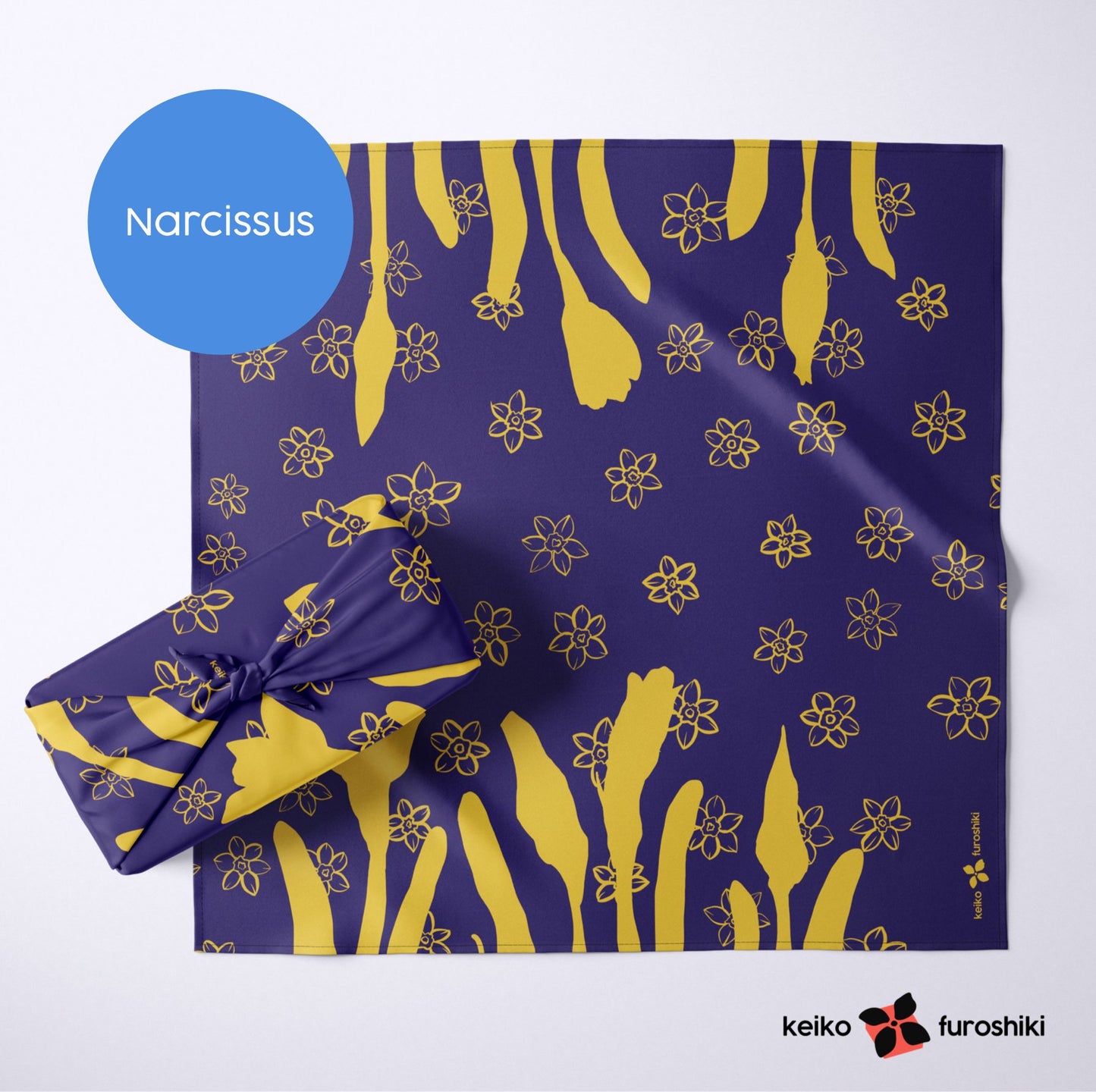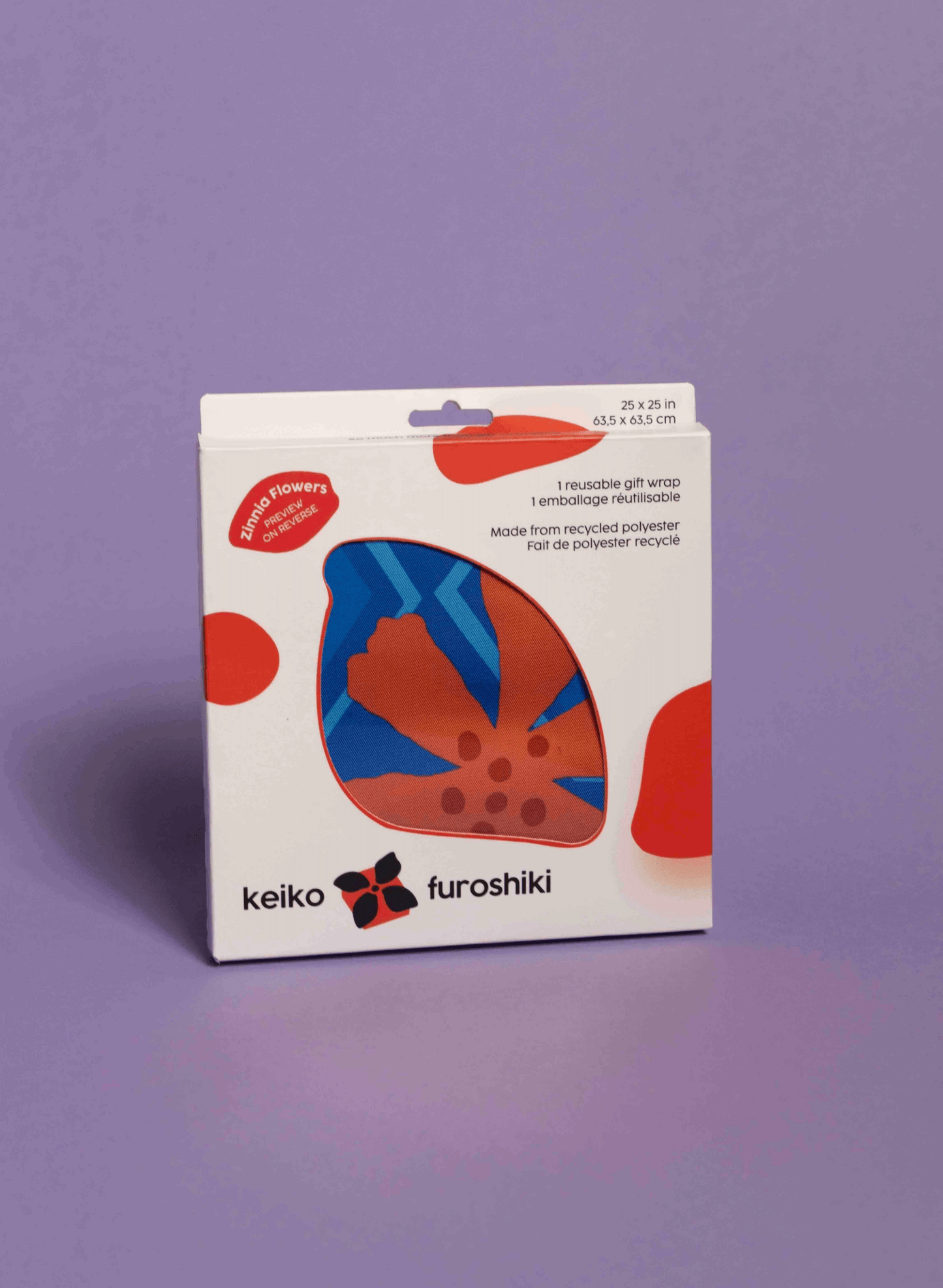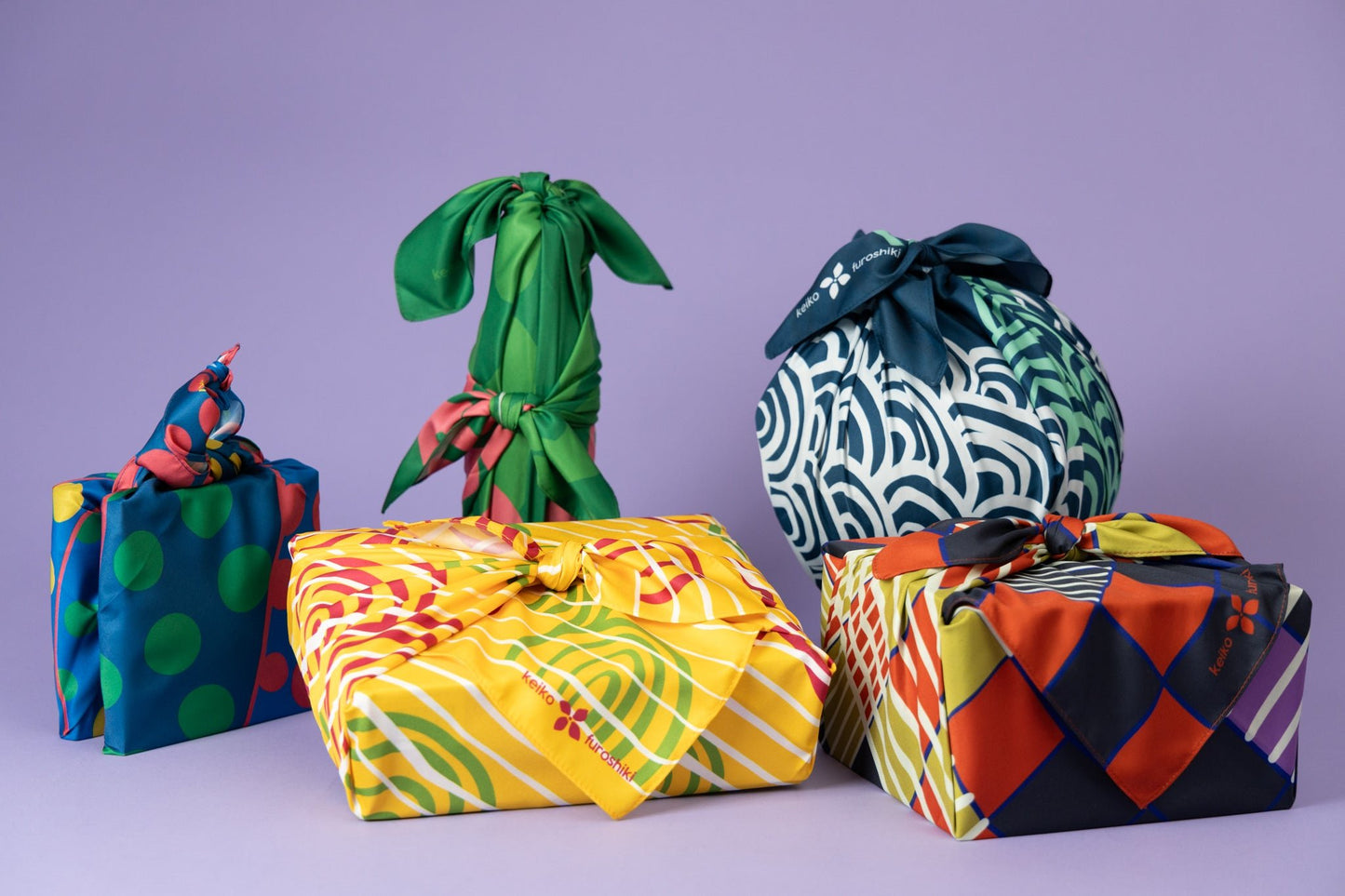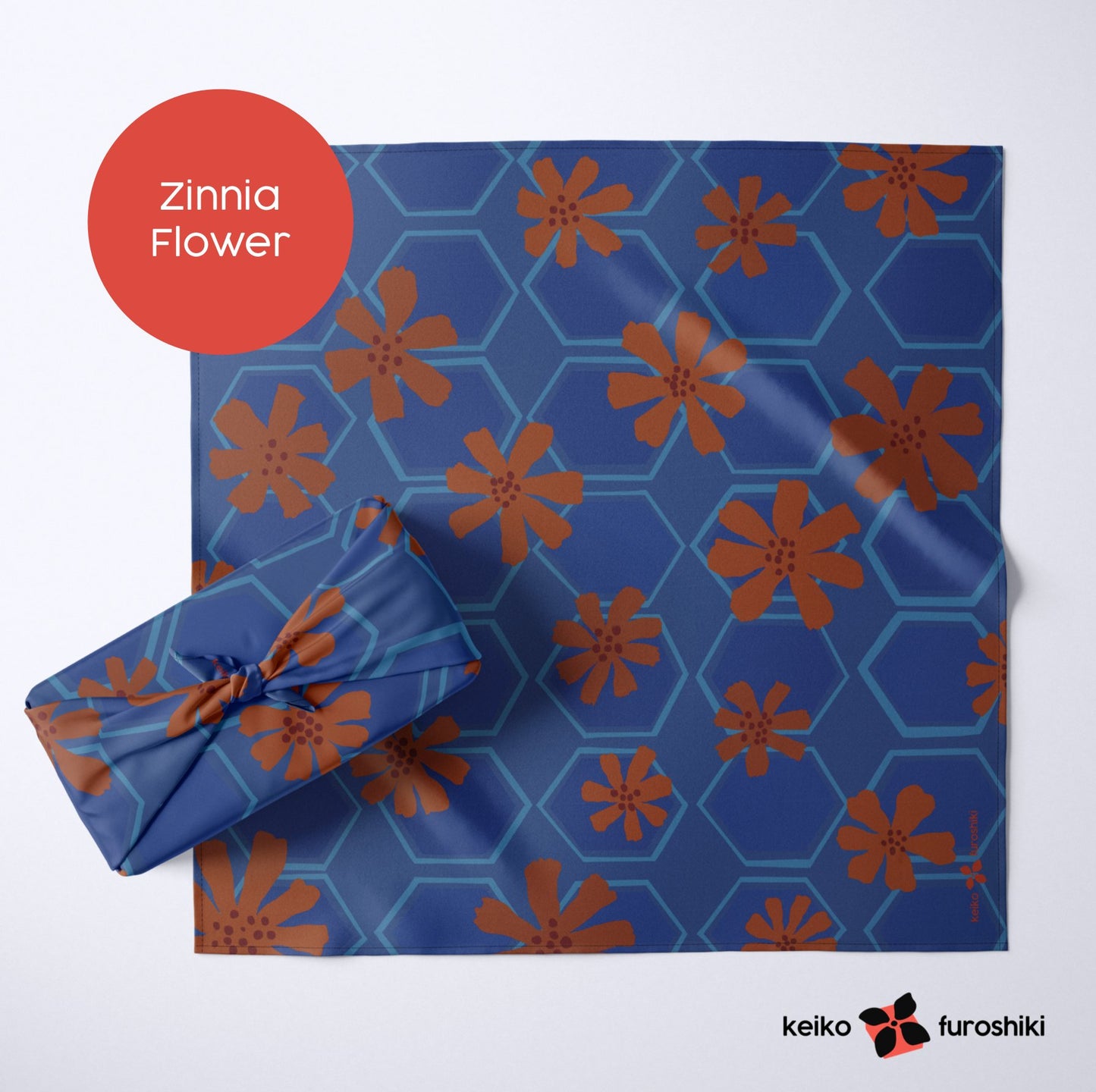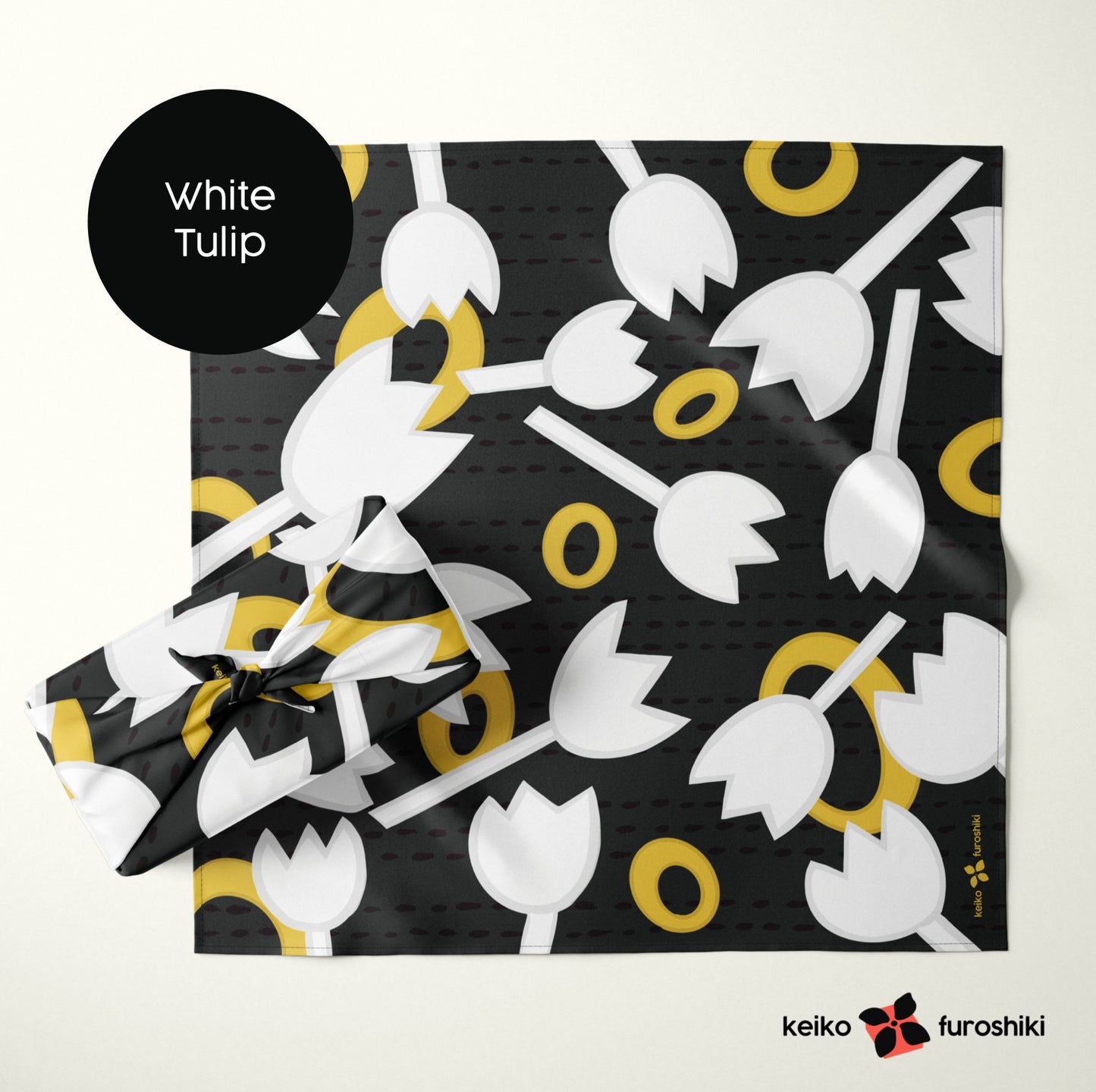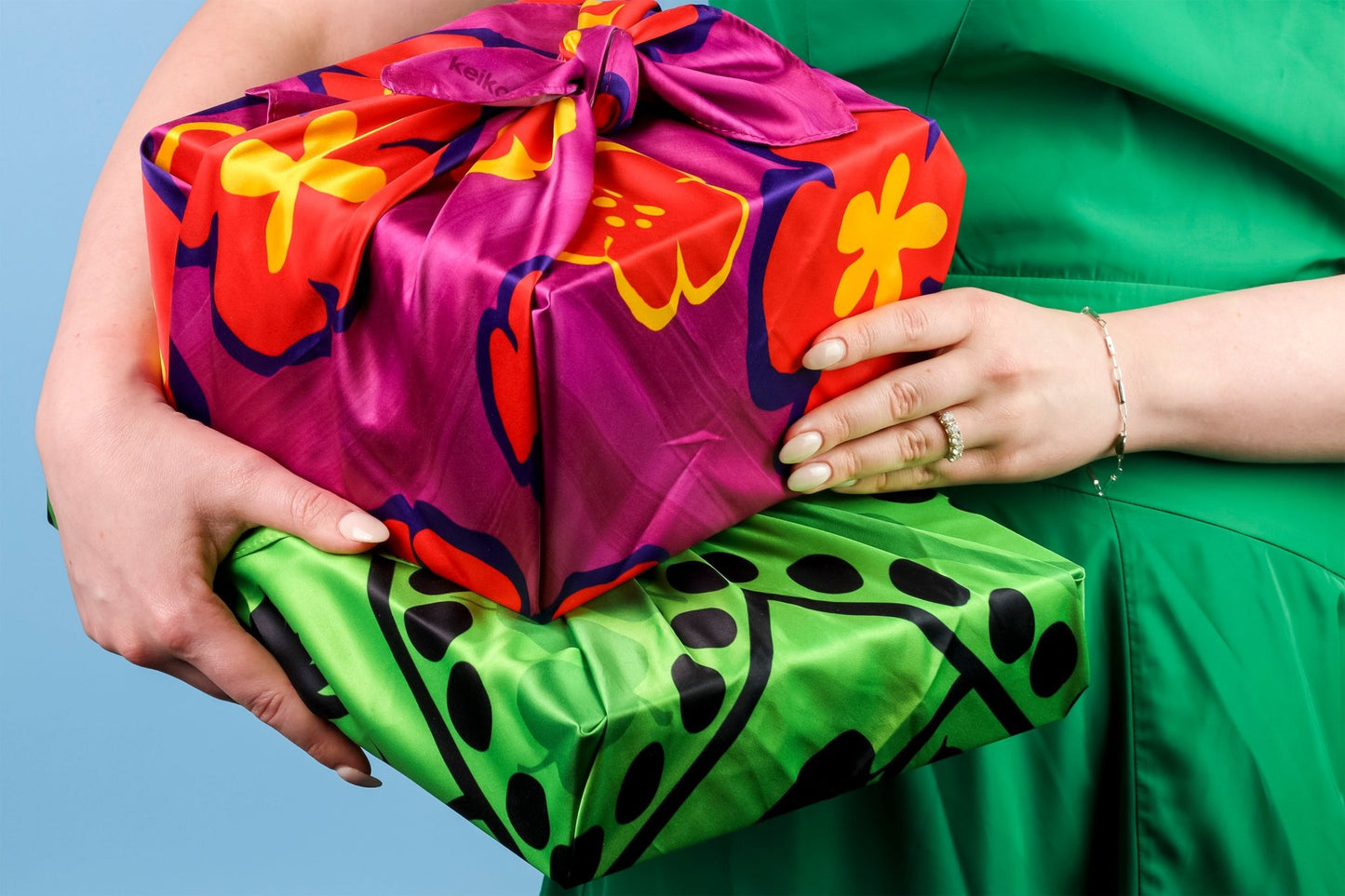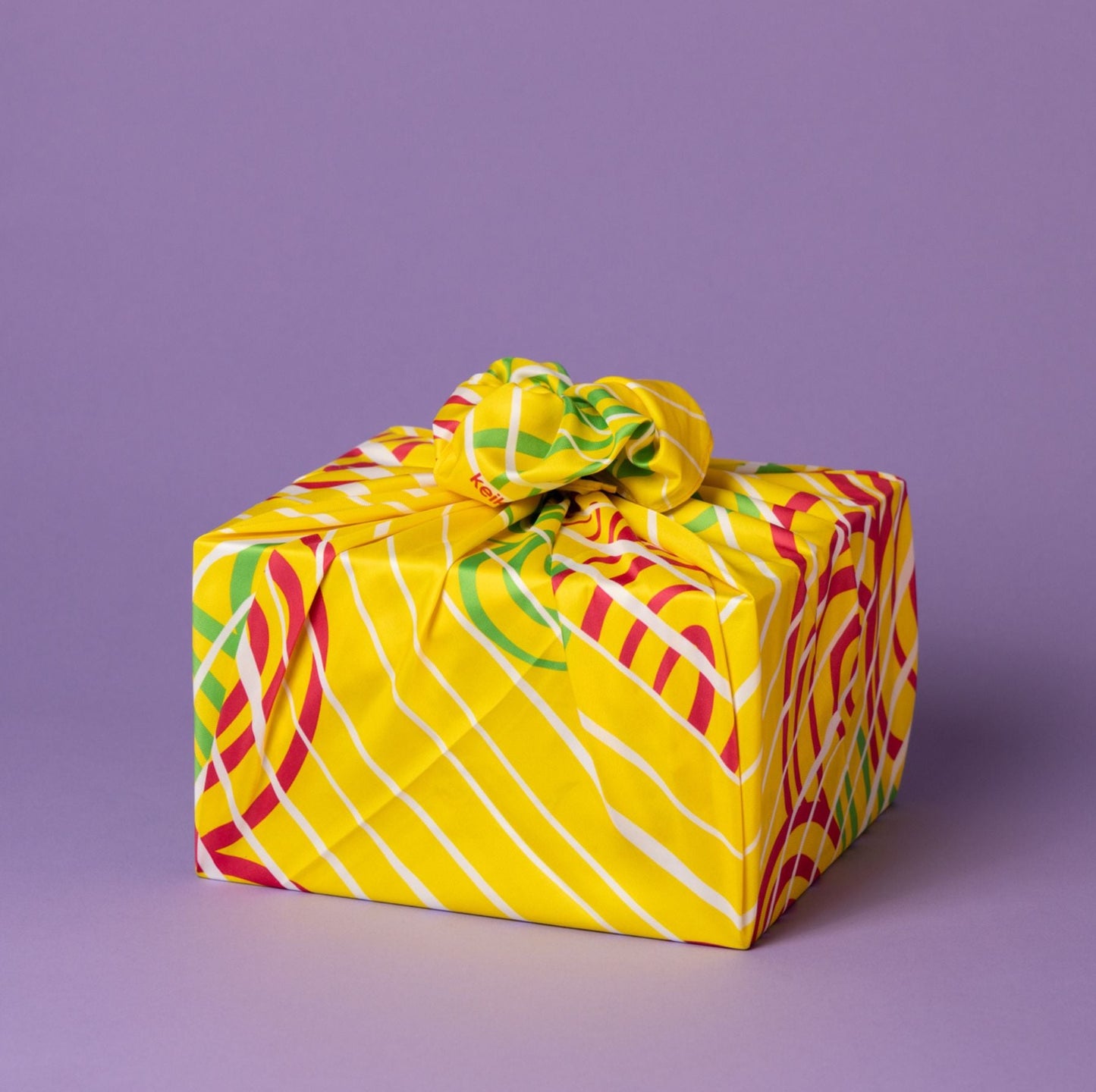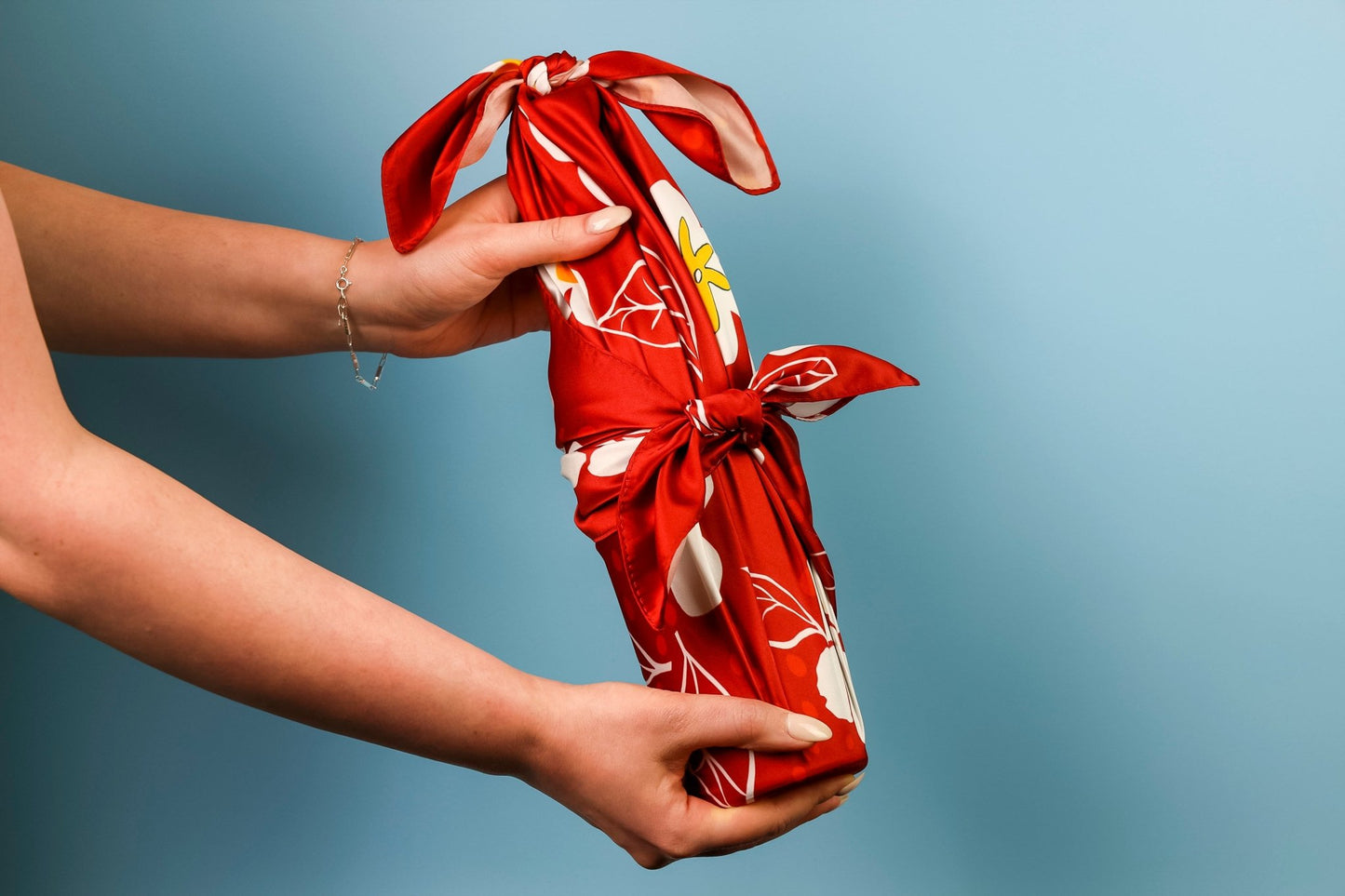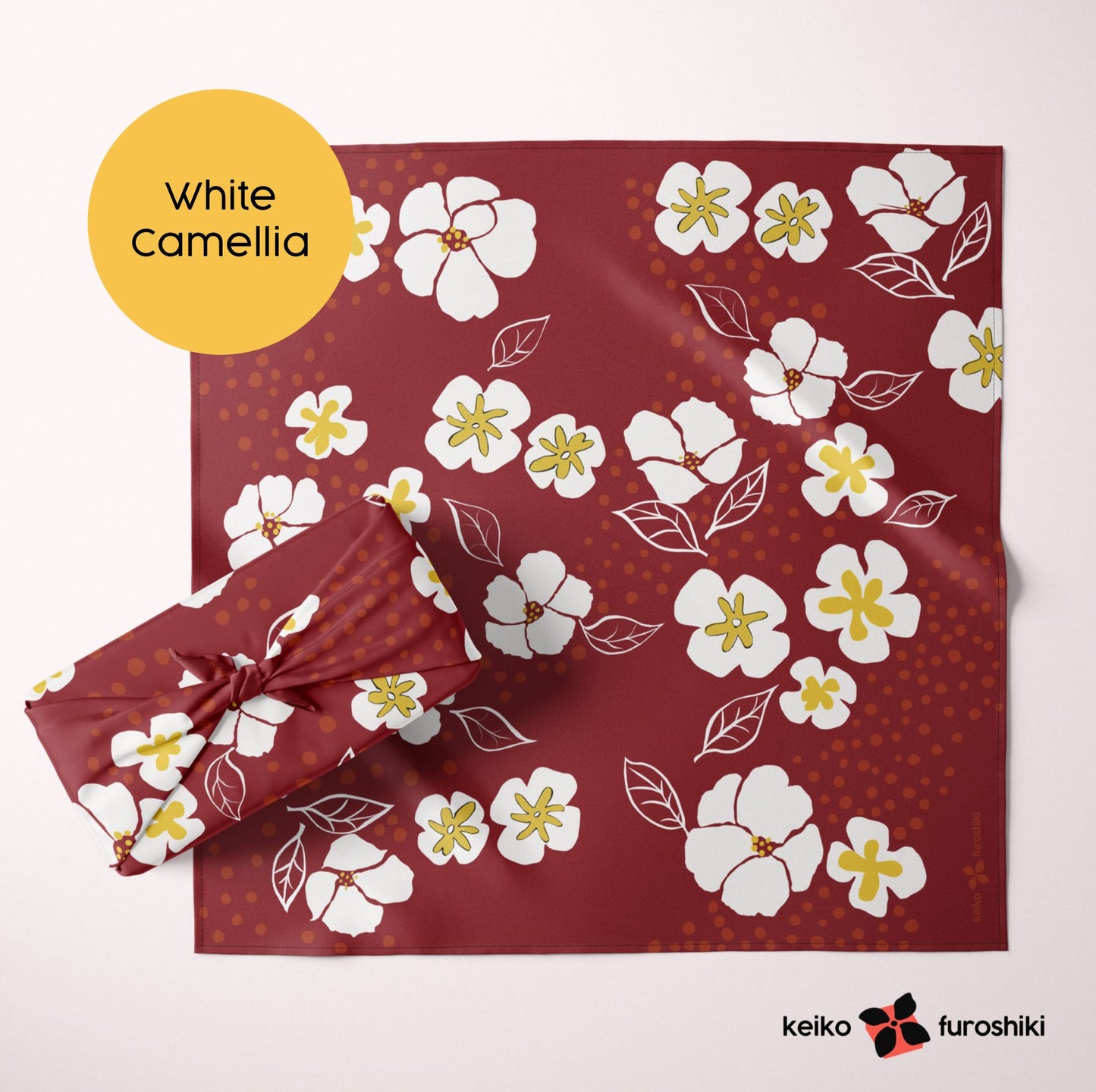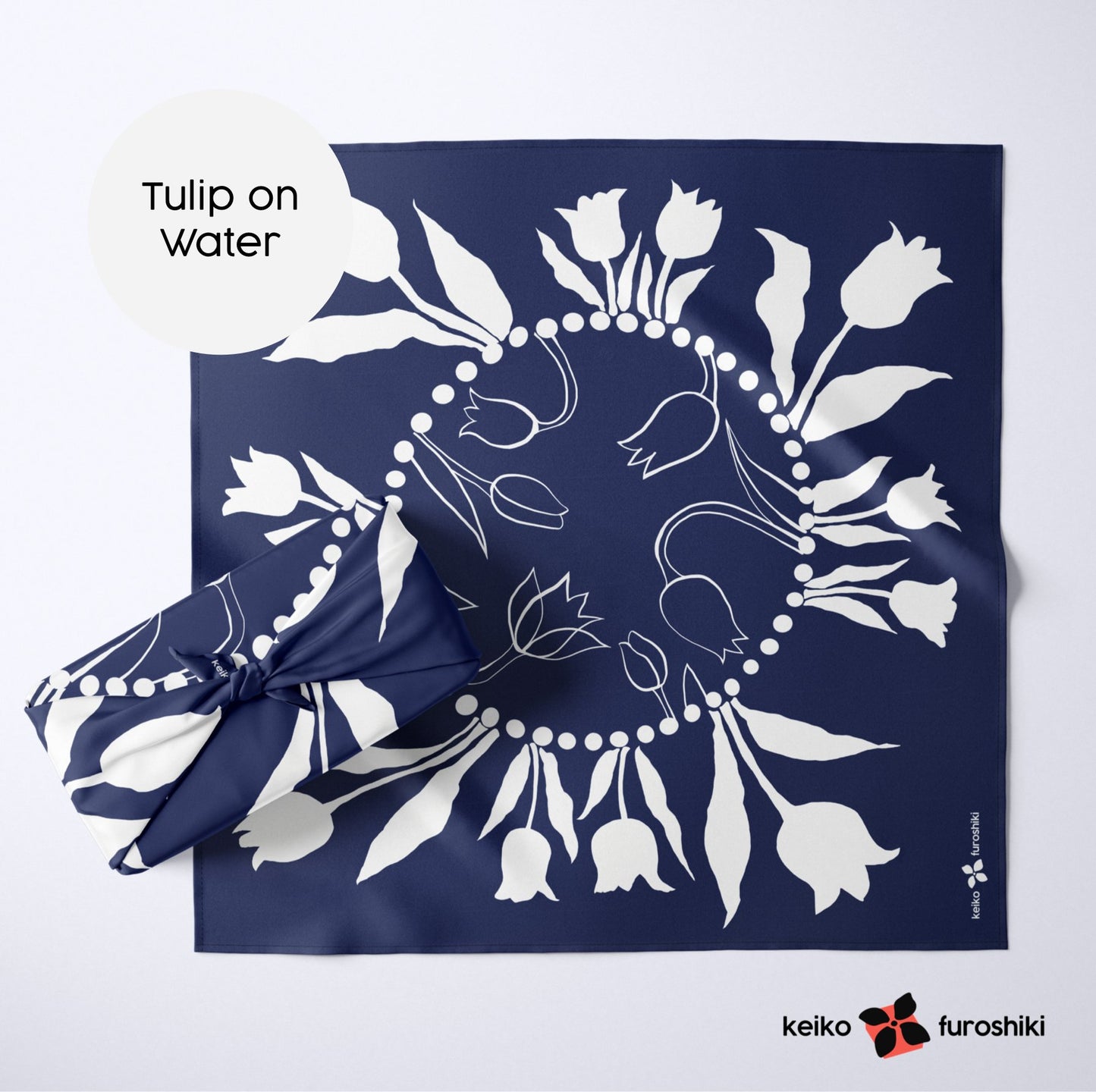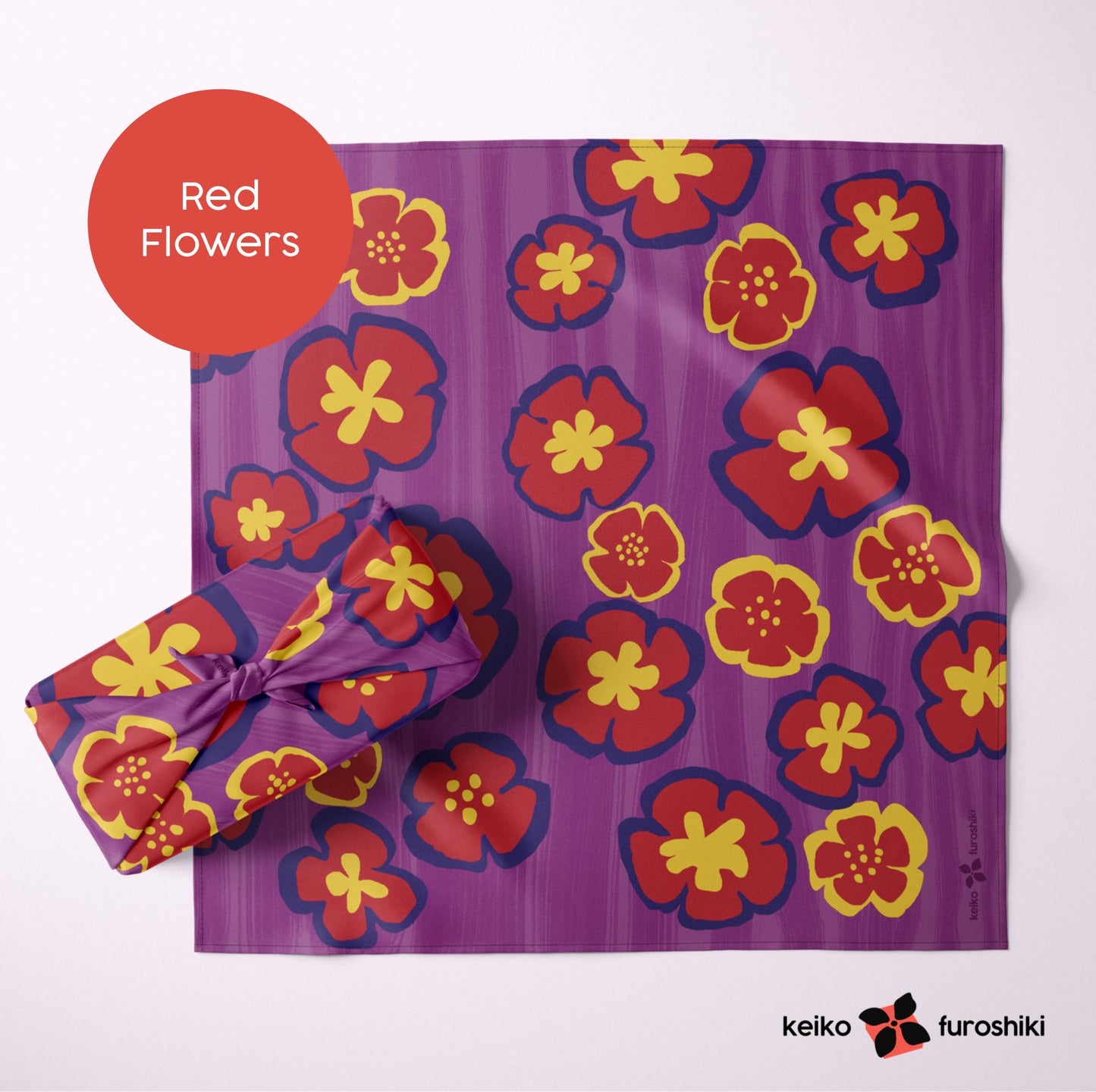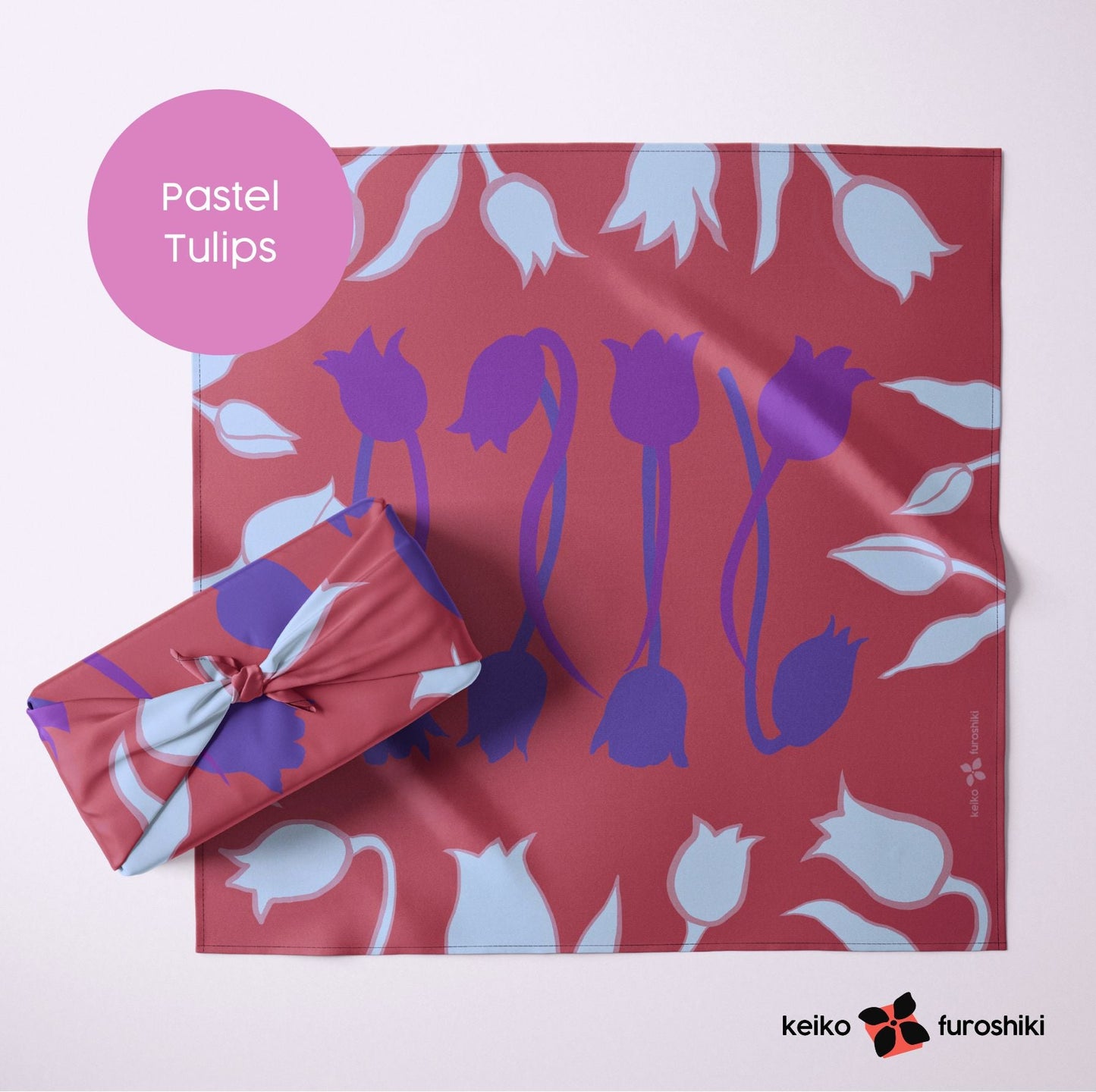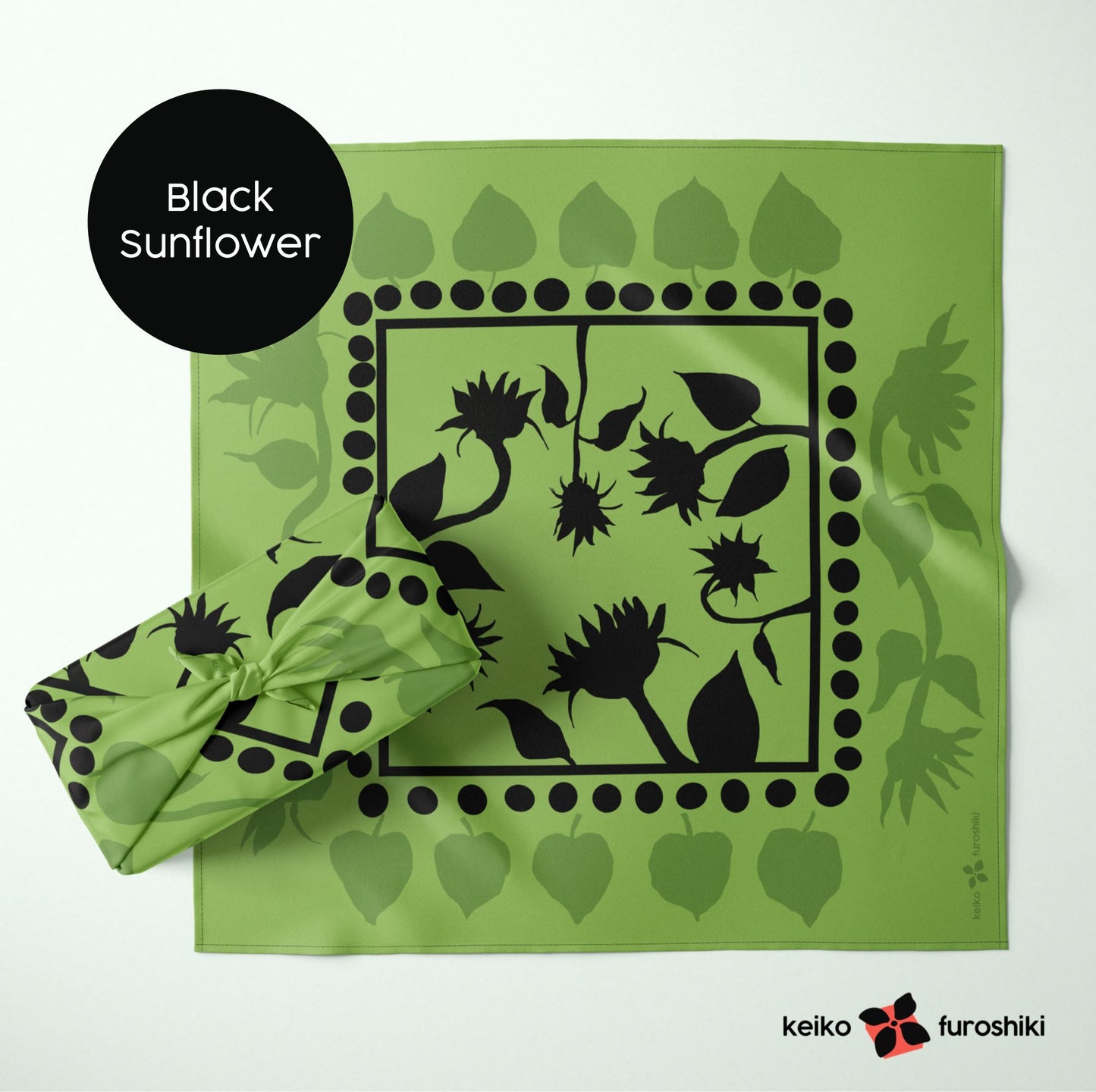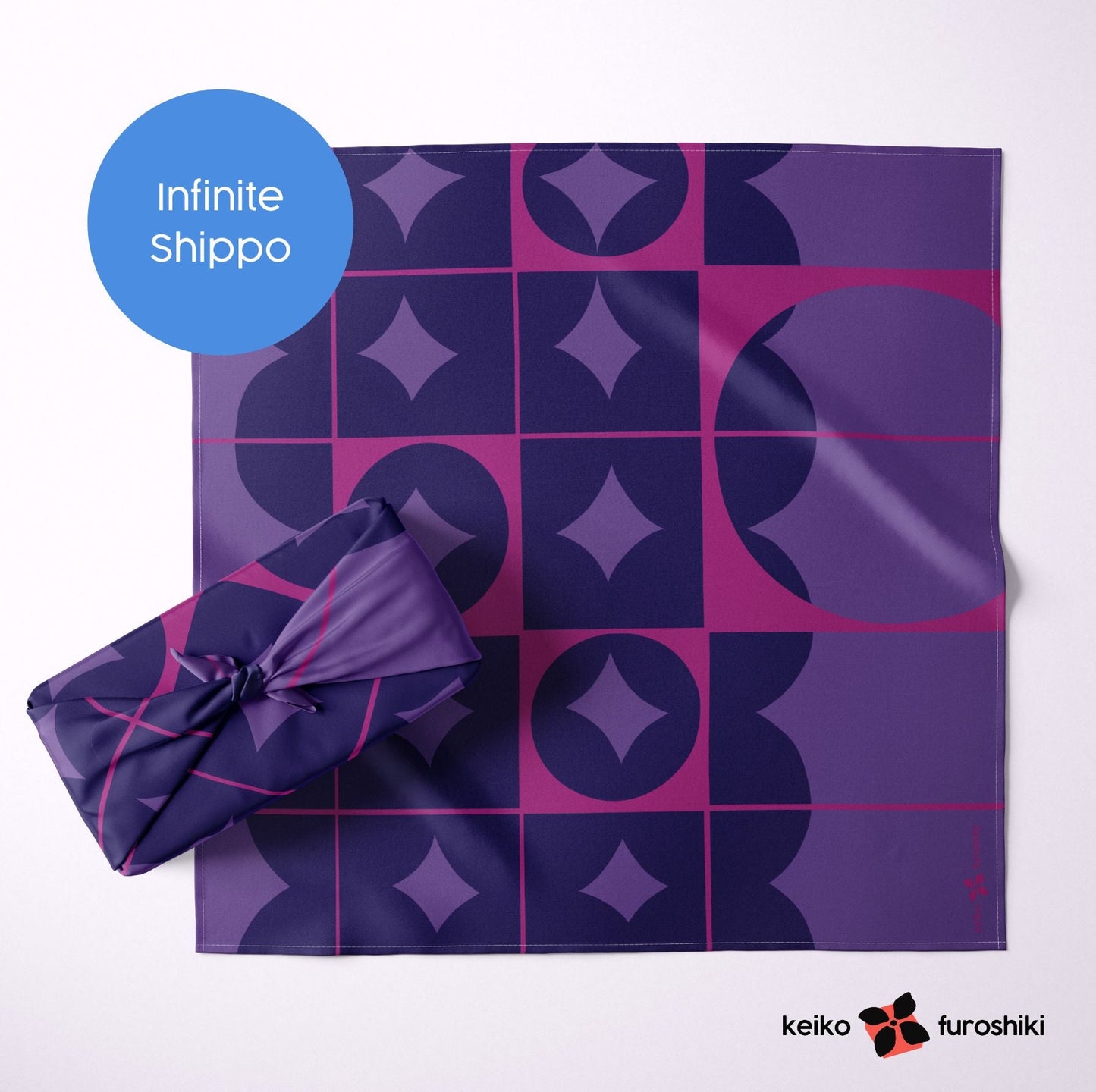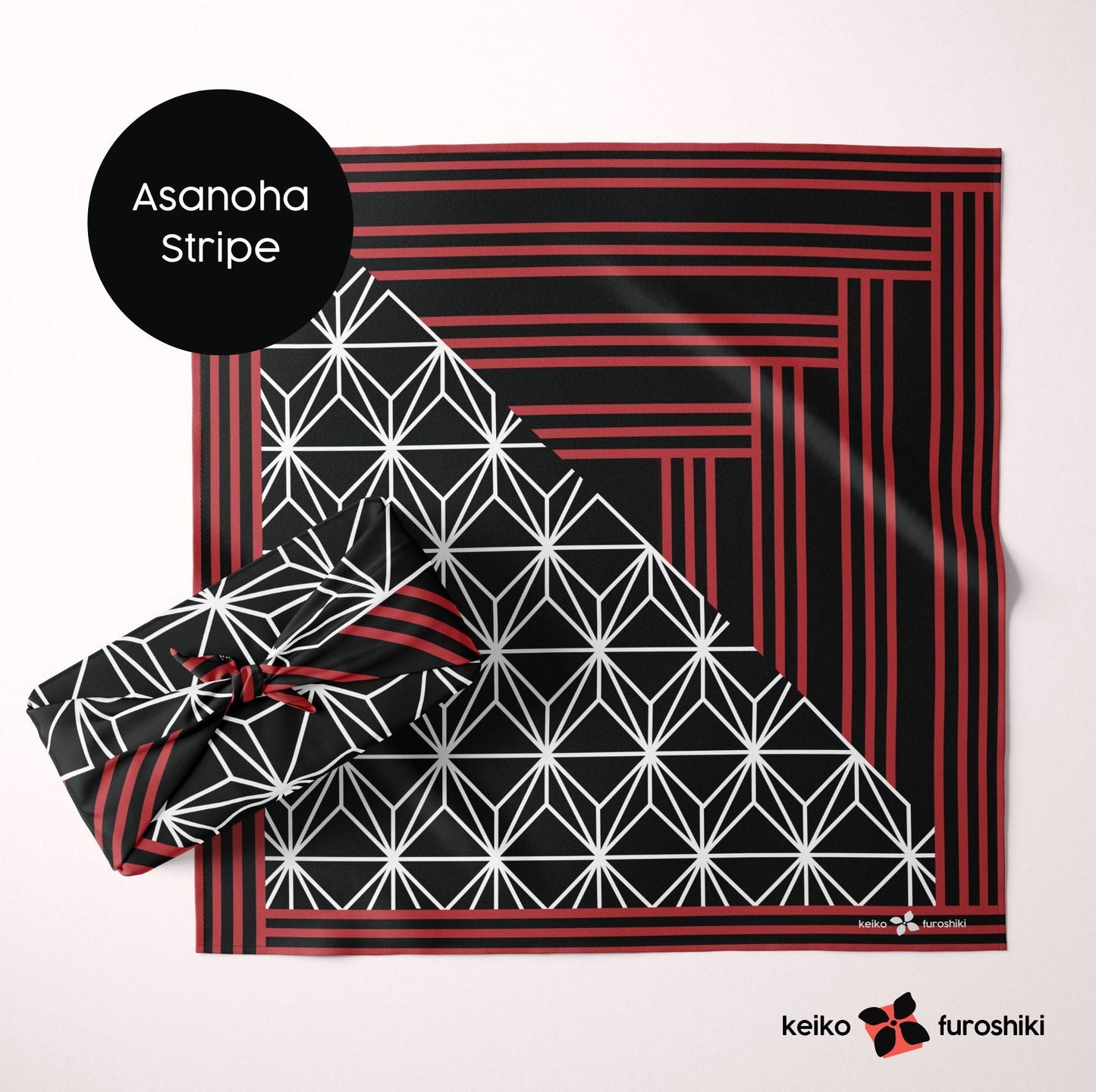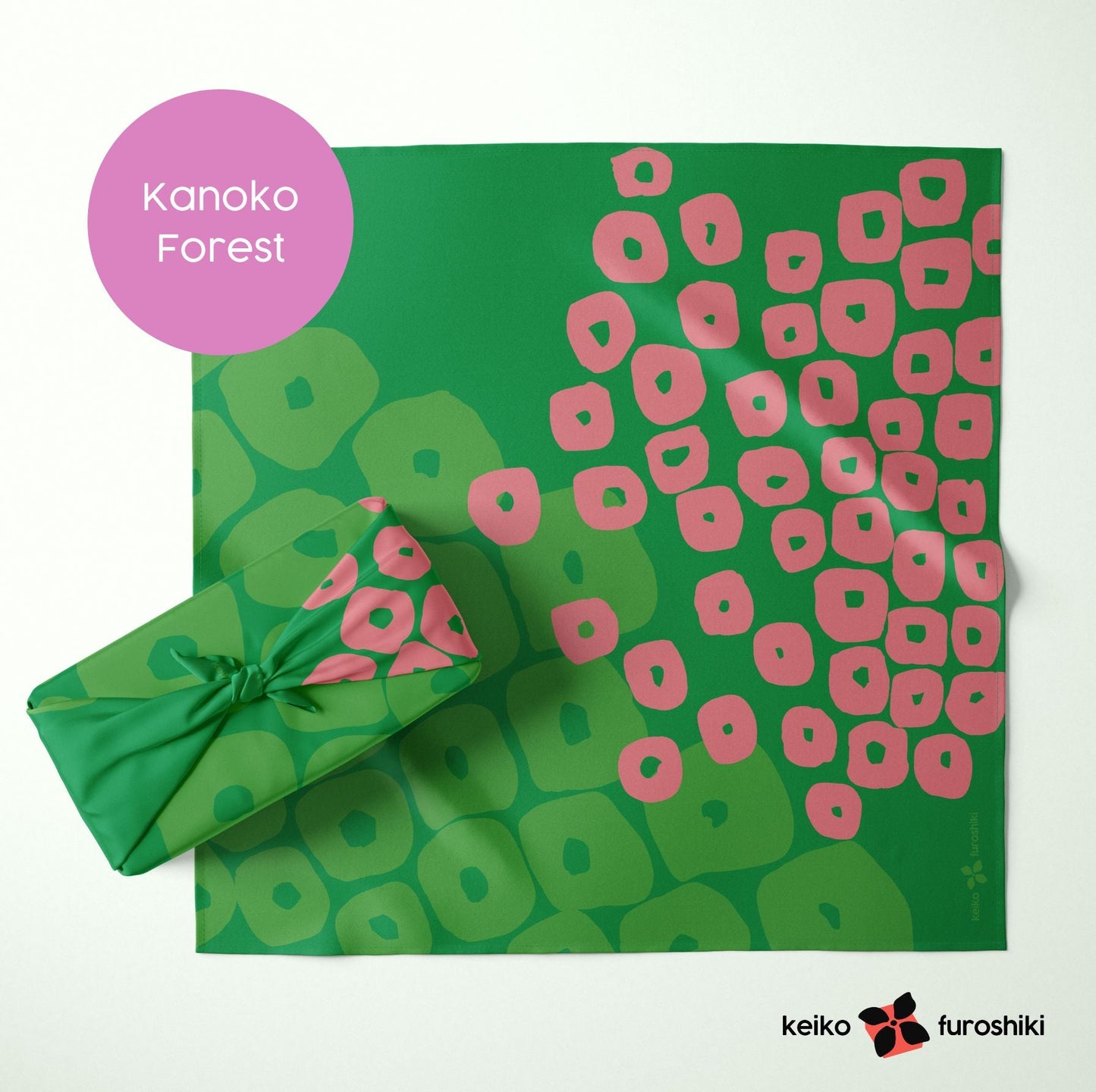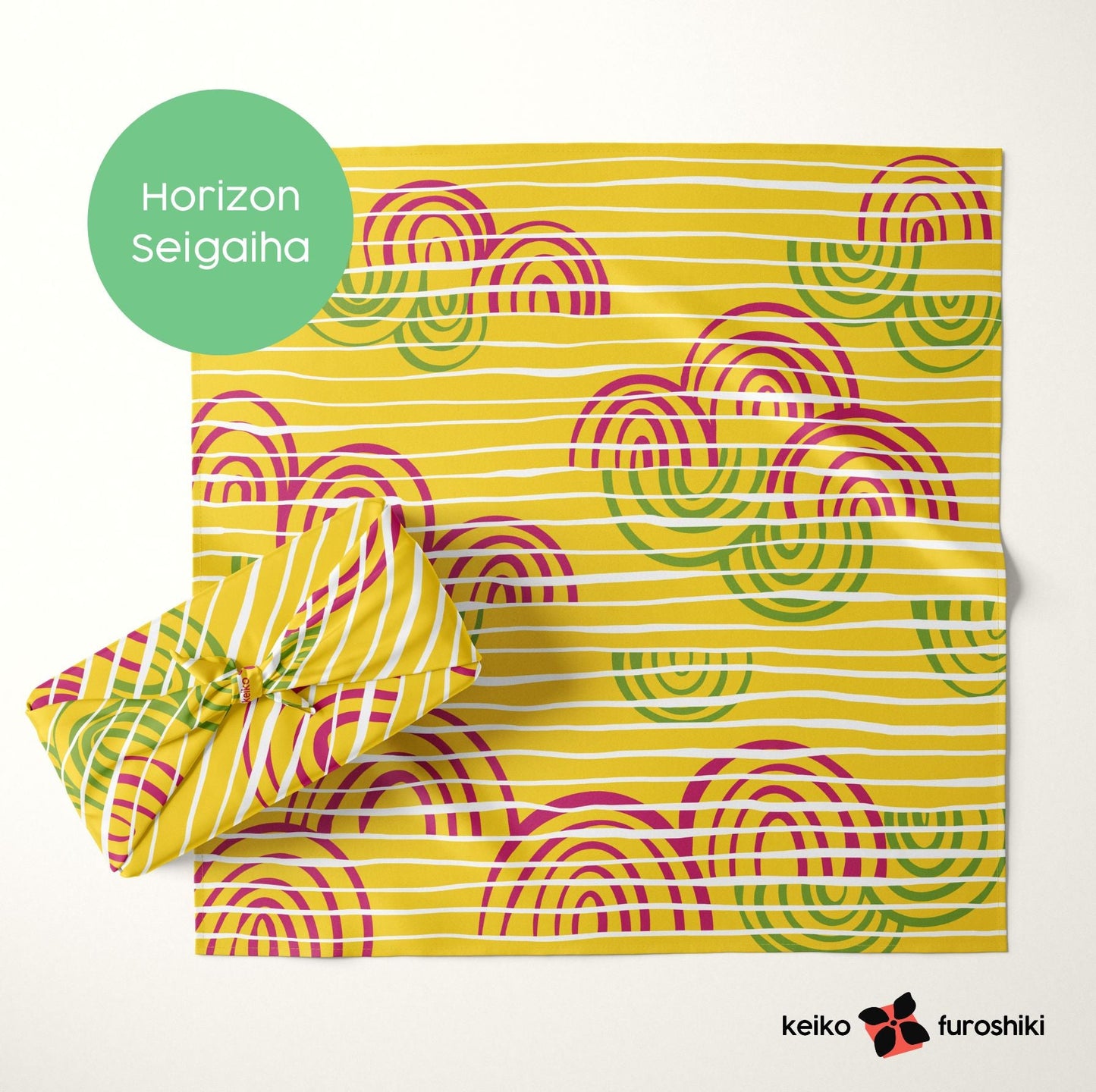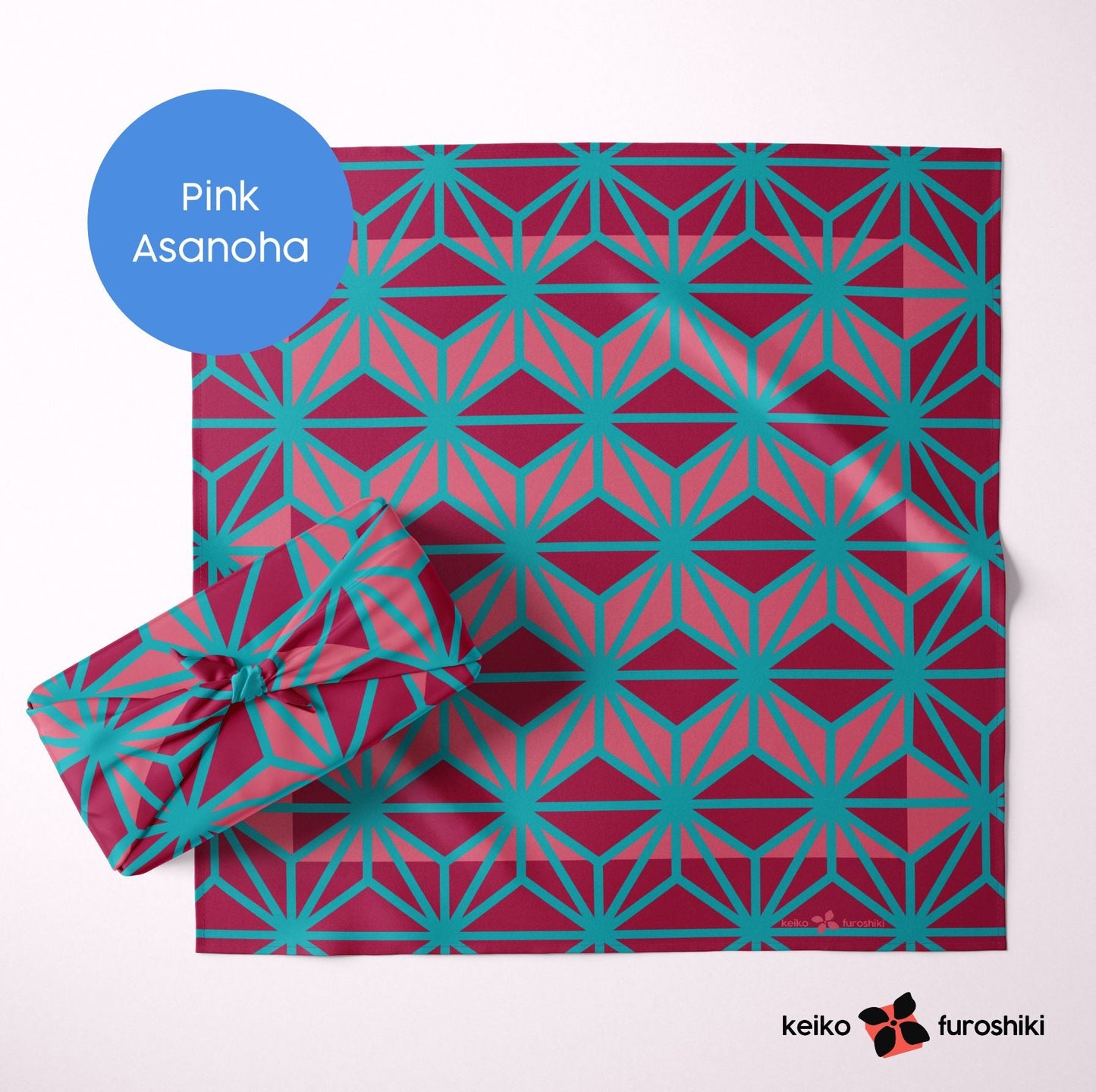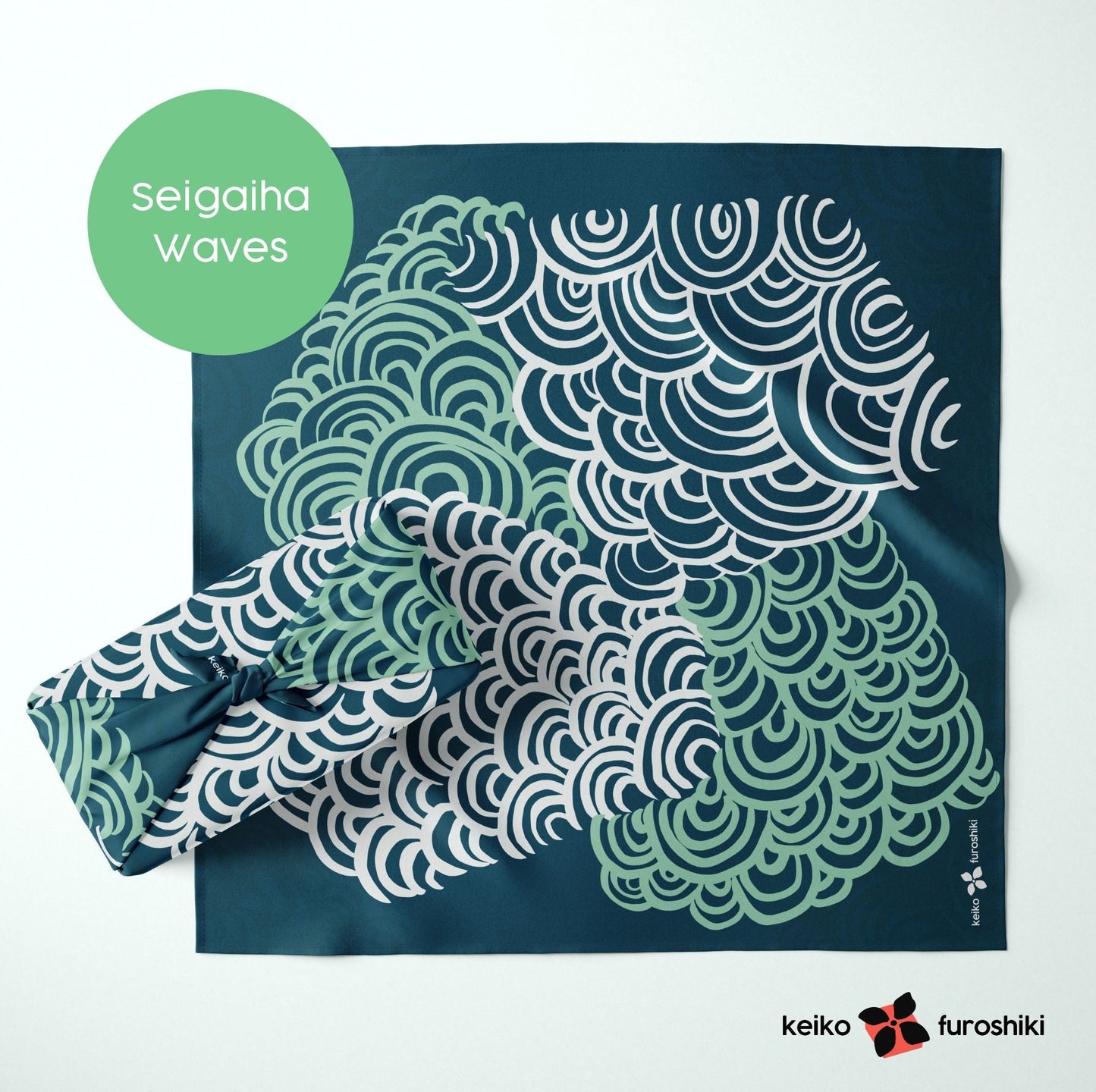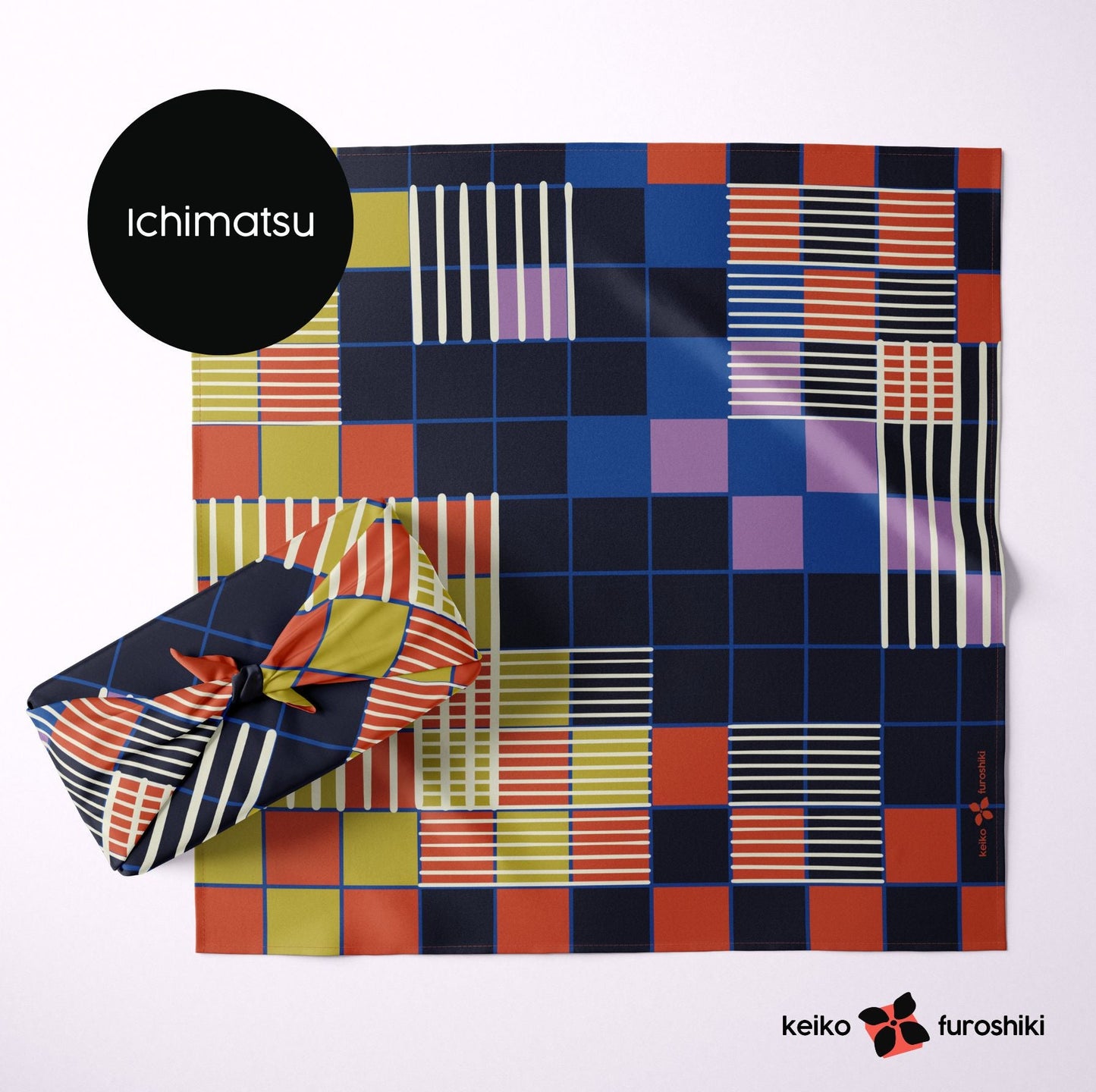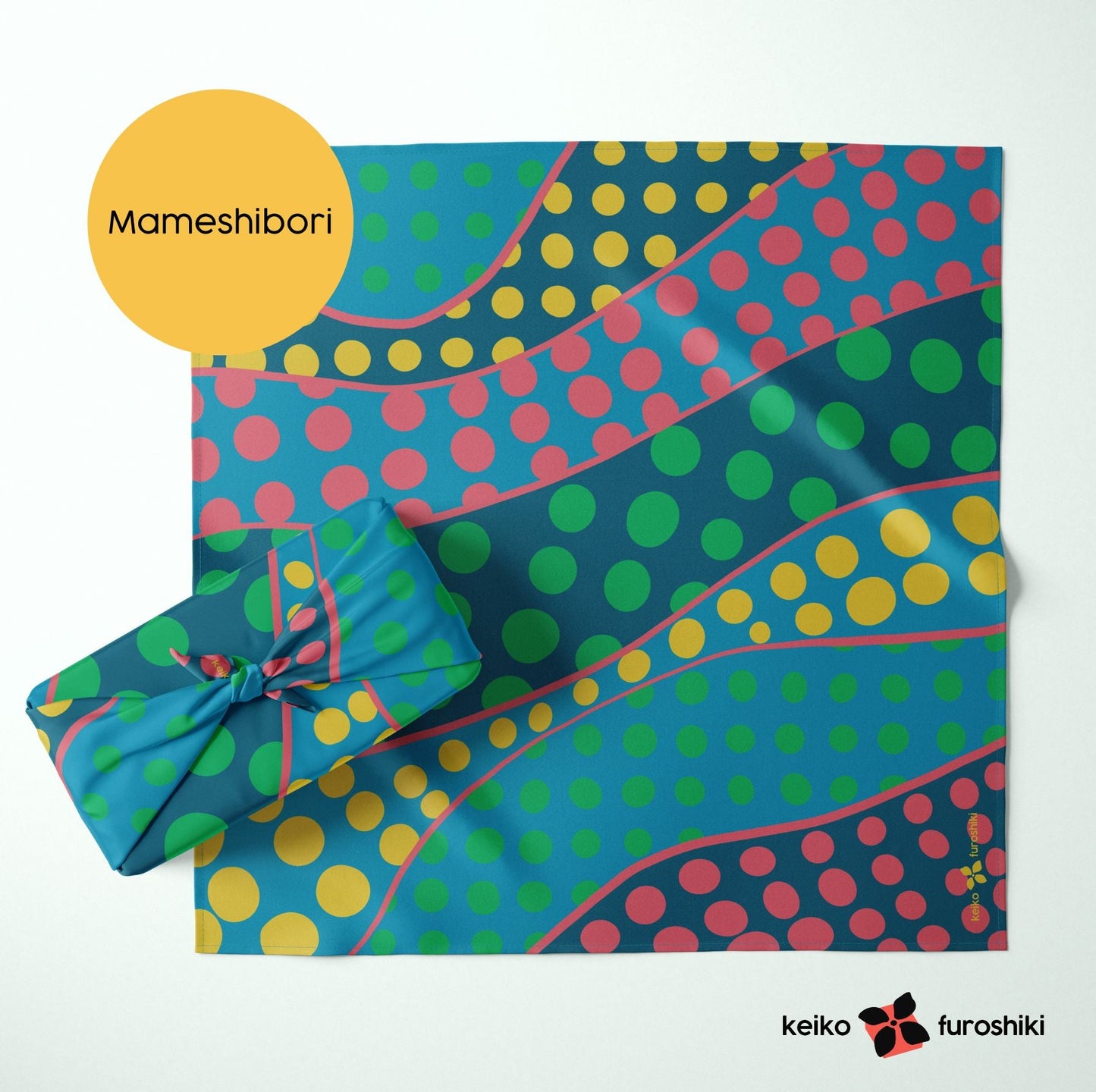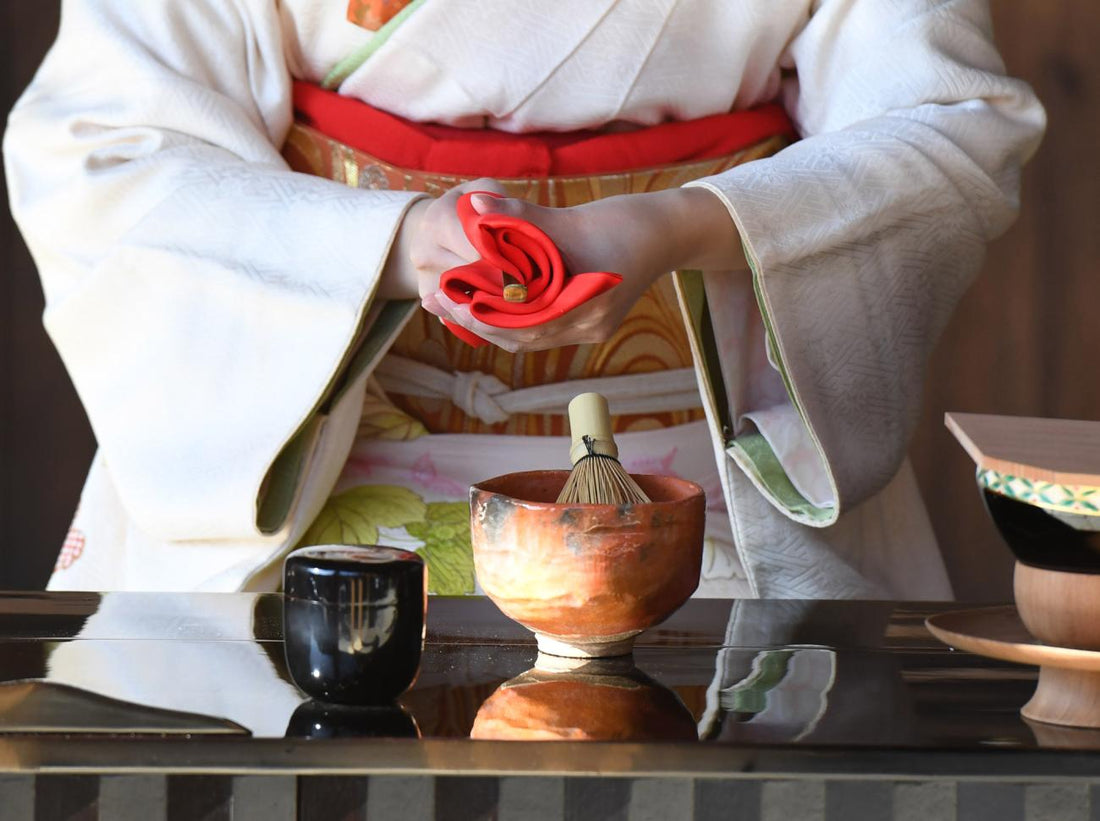
Fukusa vs Furoshiki: Key Differences in Japanese Gift Wrapping Traditions
If you’ve ever been captivated by the beauty and versatility of traditional Japanese textiles, you might have come across the terms "fukusa" and "furoshiki." Both of these fabrics play significant roles in Japanese culture, particularly in the art of wrapping and gift-giving. Although they may seem similar at first glance, they serve distinct purposes and have unique characteristics. Let's delve into the differences between a fukusa and a furoshiki.
Furoshiki: The Multipurpose Cloth
Definition and Origins:
Furoshiki are square pieces of cloth traditionally used in Japan for wrapping and carrying goods. The term "furoshiki" originally referred to the practice of using these cloths at public baths (furo) to bundle clothes and belongings. Over time, their use expanded, and they became a ubiquitous part of daily life in Japan.
Materials and Sizes:
Furoshiki can be made from a variety of materials, including cotton, silk, rayon, and modern synthetics like recycled polyester (like ours!). Sizes typically range from small (approximately 18 inches) to large (about 45 inches or more), making them incredibly versatile.
Read More: 5 Practical Ways to Use Your Furoshiki Every Day
Uses:
The primary charm of furoshiki lies in its versatility. It can be used for wrapping gifts, carrying groceries, as a scarf, or even as a decorative piece. With various tying techniques, a single furoshiki can transform into a handbag, a bottle carrier, or a unique gift wrap. This adaptability makes it a sustainable and eco-friendly alternative to disposable wrapping paper and plastic bags.
Design and Aesthetics:
Furoshiki often feature vibrant patterns and traditional motifs, reflecting the rich cultural heritage of Japan. Modern designs may incorporate contemporary themes, catering to a wide range of tastes and preferences.
Fukusa: The Elegant Gift Cover
Definition and Origins:
Fukusa, on the other hand, is a type of ceremonial cloth traditionally used to cover gifts in Japan. Its origins can be traced back to the Edo period (1603-1868), where it was commonly used among the nobility and samurai class to present gifts formally and respectfully.
Materials and Sizes:
Fukusa are usually made from luxurious fabrics such as silk, and they often feature intricate embroidery or designs that symbolize good fortune and auspiciousness. The standard size of a fukusa is smaller than that of a typical furoshiki, generally around 18 to 24 inches square.
Uses:
Unlike furoshiki, which are multipurpose, fukusa are specifically intended for gift presentation. When presenting a gift, the fukusa is placed over the item to conceal it, adding an element of surprise and respect. In traditional tea ceremonies, fukusa are also used by the host to handle utensils, symbolizing purity and cleanliness.
Design and Aesthetics:
The design of a fukusa is often more formal and elaborate compared to a furoshiki. Embroidery and motifs on a fukusa typically carry deep cultural significance, such as representations of cranes, turtles, or seasonal flowers, all of which are considered auspicious symbols in Japanese culture.
Read More: Furoshiki vs Tenugui: What's the Difference?
Key Differences
- Purpose: Furoshiki are versatile and used for various practical purposes, whereas fukusa are specifically for formal gift presentation.
- Material and Design: Furoshiki can be made from various materials and often feature modern designs, while fukusa are usually silk and adorned with traditional, intricate embroidery.
- Cultural Significance: Fukusa hold a more ceremonial and symbolic role, particularly in gift-giving and tea ceremonies, whereas furoshiki are everyday items with a practical focus.
In essence, while both furoshiki and fukusa are integral parts of Japanese culture, they serve distinct purposes and embody different aspects of tradition and functionality. Understanding these differences can enrich your appreciation of these beautiful textiles and their roles in Japanese society.


